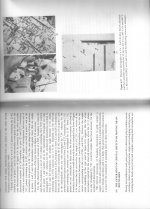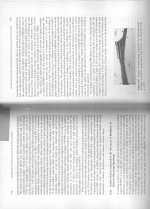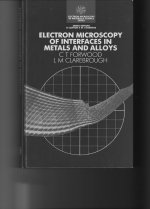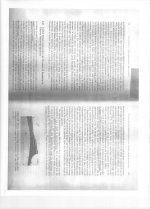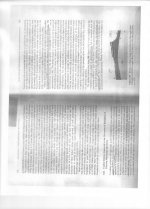Good question Bob. What appears to be happening in 'break-in' is that highly worked materials have a chance to 'relax' to their lowest energy state. Why this should be audible I do not exactly know, but that seems to be what is happening at the 'nano' level, somewhere above just atoms, but below what most measuring equipment can detect anything. After all, most of our measuring equipment is made from caps, IC's, etc that we would not put into a hi end audio product, so it should be obvious that whatever the test equipment measures, it is NOT the 'quality' of the caps or IC's to any great extent.
Fascinating bit of writing JC.
The mixing of cause and effect took my breath away - or was the the vacuum caused by the high speed hand waving? I don't exactly know, but it occurs to me that the effect is only observable at a nano level where instrumentation can't be brought to bear do to its rude and coarse construction.
All joking aside, the last sentence is a pearler. A true Gordian knot of logical circularity.
One of the advantages of working in that industry is my practice in recognizing things I've seen before. 😀
Does the copper cease to be a good conductor when bombarded by high energy electrons in an electron microscope?john curl said:Food for thought:
More straw clutching? Of course, it would have to be at low levels otherwise it would be seen in measurements and other areas of electronics. Be careful about circular arguments:Chris Hornbeck said:I would guess that if there is a significant effect it will be at low signal levels.
1. we know we can hear low level effects because we believe we can hear things which we can't measure.
2. we know we can hear things we can't measure because we believe we can hear low level effects.
(use 1 or 2 as appropriate, whichever fits the argument)
Curiously, what evidence there is tends to the opposite: we know there are things we can measure which we can't hear.
They TURN OFF the electron microscope BETWEEN viewings. They are aware of the electron energy. You should read the whole thing and then attack the authors, not me.
Last edited:
Ra7, Jack Bybee says because the electrons have an easier time after the part has dropped to its lowest energy state. Cryoing does much the same thing.
I'm not attacking anyone. I just asked whether the copper retains its conductivity, when bombarded by high energy electrons. I might then wonder what relevance this has to very low energy electron flows, as typically found in audio circuits, or capacitor break-in.
What is this 'low energy state' which survives being warmed back up to room temperature?
What is this 'low energy state' which survives being warmed back up to room temperature?
Difficult to read sideways, but the point appears to be that electrons can create or move dislocations which then continue to move after the beam is switched off? OK, let's suppose that the metal conductivity is halved/doubled by this treatment. What effect would this have on an audio circuit with this effect in a capacitor plate?
Ra7, Jack Bybee says because the electrons have an easier time after the part has dropped to its lowest energy state. Cryoing does much the same thing.
Which is like saying lets forget about entropy.
notice that quality lytics are listed with the different ESR spec changes according to temperature environment/changes
and they are also differnt in how much they change
lately I have seen caps made for very hot environment
and another for very cold climate
then one for automotive
and some aim at lowest possible ESR
and so on
the only caps they dont have are audio caps
whatever you will have with audio label on is up to whomever wants you to buy them
what or why they choose a certain cap type, and order it with their audio label, to sell as audio caps, noone knows
could be anything
in these times, I will stay away from anything with a audio label
could the most crappy no name relabelled cap
and them gold letters, its the easiest way to cheat people
and they are also differnt in how much they change
lately I have seen caps made for very hot environment
and another for very cold climate
then one for automotive
and some aim at lowest possible ESR
and so on
the only caps they dont have are audio caps
whatever you will have with audio label on is up to whomever wants you to buy them
what or why they choose a certain cap type, and order it with their audio label, to sell as audio caps, noone knows
could be anything
in these times, I will stay away from anything with a audio label
could the most crappy no name relabelled cap
and them gold letters, its the easiest way to cheat people
Forget the esoteric guessing at a cause - the reality (as SY pointed out a number of pages ago) is that there is yet to be a demonstration of an effect.
Claims of personal experience are no more proof of an electro-acoustic effect than they are of a psycho-acoustic effect. Oh, except that the latter has solid data and a history of reliable research outcomes showing its existence, while the former has handwaving.
Claims of personal experience are no more proof of an electro-acoustic effect than they are of a psycho-acoustic effect. Oh, except that the latter has solid data and a history of reliable research outcomes showing its existence, while the former has handwaving.
I have just noticed that the OP was asking about PIO caps. For these I would recommend a few days in a warm oven, to drive off any water in the paper. ......
Let me try a different door
 .
. My former employer was a power company and among other things, I was attached to a division that maintained boilers in both coal and nuclear plants. At the highest level of the coal plants is a large header with up to hundreds of pipes attached to its sides. The welders used the finest stainless rods and wires when repairs were made and everything was x-rayed for perfection.
Before being released for use, the welds were wrapped in large electric blankets, brought to a high temperature and slowly allowed to cool over several hours, then x-ray again. The process is generally known as "Metal Stress Relief" - those silly molecules and electrons "realigning" again.
I do apologize for for going so far from amps and caps, but it is an admitted extreme example of what could be possible within a cap. (surely expecting silly posts about not running my amp in a 2000 degree heat exchanger 😉)
But is there not a possibility that techniques like "a few days in a warm oven" might be allowing more than the expulsion of moisture? Couldn't even that much lower heat over an extended period be inducing a bit of "molecular realignment" within a capacitor - differing from the "fresh" state as delivered from the manufacturer?
Just Asking.........
You can bring a 'horse' to water, but ... '-)
...you can't make him cough up actual evidence, just irrelevant cites and inapt analogies.
notice that quality lytics are listed with the different ESR spec changes according to temperature environment/changes
and they are also differnt in how much they change
😕
But is there not a possibility that techniques like "a few days in a warm oven" might be allowing more than the expulsion of moisture?
Nope, just answerin'. 😀
My current employer (I'm their Technical Director) is one of the largest tooling and metalworking companies in the world. Annealing, defect and boundary mobility, and stress relief are our daily bread and butter. Caps aren't even vaguely the same. If someone came to me with detailed musings and analogies for a problem where there was zero actual evidence that the problem exists, he'd be collecting unemployment. Fashion audio is a different animal, apparently.
- Status
- Not open for further replies.
- Home
- Amplifiers
- Tubes / Valves
- breaking in audio capacitors
